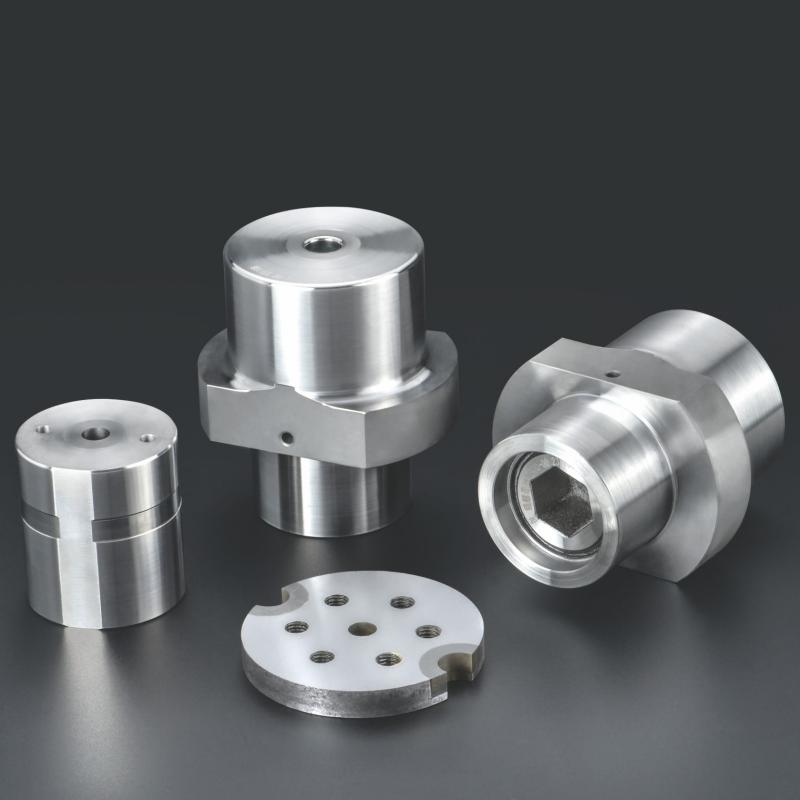In the modern manufacturing world, precision, durability, and efficiency are the cornerstones of industrial success. Among the many tools that support these values, Carbide Dies stand out as essential components in metal forming, wire drawing, and nut production. Whether producing high-strength fasteners, shaping metal parts, or ensuring dimensional consistency, carbide dies—especially Carbide Nut Dies—play a pivotal role in achieving top-quality results.

1. What is a Carbide Die?
A carbide die is a precision tool used to shape, cut, or form metal materials under high pressure. It is typically made from Tungsten Carbide, a composite material known for its exceptional hardness and wear resistance. Compared to traditional steel dies, carbide dies can endure significantly higher stress and maintain precision for a longer time, even in mass production environments.
Carbide dies are used across various forming processes such as:
Wire drawing
Cold heading
Thread rolling
Extrusion
Punching and stamping
Their high hardness ensures they can withstand the repeated impact and friction encountered during metal processing.
2. What is a Carbide Nut Die?
A carbide nut die is a specialized type of carbide die used specifically for forming and threading nuts—a crucial component in the fastener industry. During production, nut dies are responsible for creating internal threads within the nut body with extreme accuracy and smoothness.
The carbide nut die is designed to endure high-speed cold forming or thread-cutting operations, offering consistent thread quality, tight tolerances, and minimal wear over extended production cycles.
Key applications of carbide nut dies include:
Hex nuts
Flange nuts
Cap nuts
Lock nuts
Automotive and aerospace fasteners
3. Key Features of Carbide Dies
Carbide dies are engineered to deliver superior strength and precision under extreme working conditions. Their unique material composition and precise machining make them indispensable in heavy-duty applications.
Here are some of their standout features:
High Hardness and Strength:
Tungsten Carbide offers a hardness of 89–93 HRA, ensuring excellent wear resistance and dimensional stability.Superior Heat Resistance:
The material can withstand high temperatures without deformation, making it suitable for high-speed or continuous production.Excellent Surface Finish:
Precision grinding and polishing deliver a smooth surface, improving product quality and reducing friction.Low Deformation Rate:
Even under high pressure or impact, carbide dies maintain their form and accuracy.Extended Service Life:
Carbide dies can last up to 10 times longer than traditional tool steel dies, reducing maintenance and replacement costs.
4. Advantages of Using Carbide Nut Dies
The carbide nut die combines all the core advantages of carbide material with optimized geometry for threading operations.
Key advantages include:
High Thread Accuracy:
Maintains consistent thread pitch and depth, ensuring compatibility and strength of fasteners.Reduced Production Downtime:
Extended die life minimizes the need for frequent replacements, enhancing production efficiency.Smooth Thread Surface:
The high polish of carbide reduces friction and improves the surface finish of nuts.Resistance to Corrosion and Abrasion:
Ideal for working with hard materials such as stainless steel or alloy steel.Customization Flexibility:
Carbide nut dies can be customized based on nut size, thread type (metric, UNC, UNF, etc.), and production volume.
5. Applications Across Industries
Carbide dies and nut dies are used in diverse manufacturing sectors that demand accuracy and longevity. These include:
Automotive Industry:
For producing high-strength bolts, nuts, and automotive fasteners that meet strict safety and performance standards.Aerospace Sector:
Where dimensional precision and consistency are vital in high-stress applications.Construction and Infrastructure:
For large-scale nut and bolt production used in structural assemblies.Electronics and Appliances:
For small, precise fasteners that require uniform threading and shape.Machinery and Tools:
Used in forming, punching, and extrusion processes for mechanical components.
6. Customization and Manufacturing Process
Modern carbide die manufacturers provide OEM and ODM customization services to meet specific customer needs.
Customization options include:
Material selection: Different grades of tungsten carbide for varying hardness and toughness.
Size and shape: Custom inner and outer diameters, die geometry, and tolerances.
Thread specifications: Metric, UNC, UNF, BSW, and other standards.
Coating and treatment: Optional TiN, TiCN, or DLC coatings for enhanced wear resistance.
Polishing level: Mirror or precision-grade surface finish.
The manufacturing process typically includes:
Powder preparation and pressing
Sintering under high temperature
CNC precision grinding
Polishing and inspection
Final assembly and quality testing
7. Quality Assurance and Testing
To ensure superior quality and consistency, reputable carbide die manufacturers implement strict inspection and testing procedures, including:
Dimensional accuracy verification with coordinate measuring machines (CMM)
Hardness testing
Surface roughness analysis
Thread gauge inspection
Wear resistance and durability tests
Every carbide nut die is carefully tested before shipment to guarantee that it meets or exceeds industrial standards.
8. Why Choose Our Carbide Dies
Choosing the right die manufacturer can make a significant difference in your production efficiency and cost control.
Our carbide dies and carbide nut dies are built with advanced CNC machining, fine polishing technology, and premium tungsten carbide material.
We offer:
Stable product quality and precision tolerance
Short lead times and reliable delivery
Custom-made solutions based on drawings or samples
Competitive factory-direct pricing
Technical support for die design and maintenance
9. Maintenance Tips for Longer Service Life
Proper maintenance extends the lifespan and performance of carbide dies:
Clean the die surface after each production batch.
Avoid mechanical shocks or improper handling.
Apply suitable lubricants to minimize friction.
Regularly inspect for wear or cracks and re-polish if necessary.
Store in a dry, anti-corrosion environment.
In the precision-driven world of metal forming and fastener manufacturing, carbide dies and carbide nut dies remain the backbone of quality and efficiency. Their unmatched durability, accuracy, and stability ensure that every part produced meets the highest standards of industrial performance.
Whether you are producing large-scale automotive fasteners or high-precision aerospace components, investing in carbide tooling is not just a choice—it’s a commitment to excellence.











